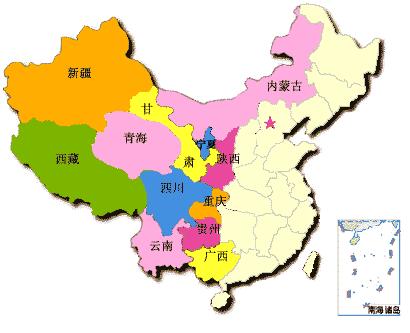Closing the east-west gap
The west has a special significance to the Chinese nation. It is the headwater of the Yangtze, Yellow and a few other major rivers that have given rise to and sustained Chinese civilization. It is also the site of lofty mountain ranges such as the Himalayas, Tianshan and Kunlun, and home to prodigious variety -- its population includes a majority of the 55 minority ethnic groups in China.
 |
| File photo. In 2000, the central government unrolled the Western Development Strategy, a plan that covers two-thirds of the national territory and involves 12 provincial-level administrative areas. |
In 2000, the central government unrolled the Western Development Strategy, a plan that covers two-thirds of the national territory and involves 12 provincial-level administrative areas -- Chongqing Municipality; Sichuan, Guizhou, Yunnan, Shaanxi, Gansu and Qinghai provinces; and the autonomous regions of Tibet, Ningxia Hui, Xinjiang Uygur, Inner Mongolia and Guangxi Zhuang. Back then, their combined GDP accounted for 17.2 percent of the national total, and per-capita GDP was less than half the level of eastern areas.
The turn of the new millennium opened a window of opportunity for the central government to launch the program: on the one hand, the eastern areas had accumulated adequate capital, human, technological and managerial resources that would enable them to support the west; on the other, the rich natural resources and latent markets of the western areas beckoned eastern investors and promised them more business opportunities.
Over the past decade, the central government invested in 70 western-based projects, including the formidable Qinghai-Tibet Railway and the west-to-east gas and power transmission systems. These projects established modern infrastructure and transportation facilities in the west.
Ecological construction has always been a focus of attention in western development. Over the decade, massive projects conceived to preserve and restore environmental balance have been implemented, such as the conversion of farm fields back into forests, rejuvenation of grasslands through herding bans, protection of natural forests, and desertification control. To take just one example of the depth of financial commitment, the central government invested RMB 433.7 billion to return 403 million mu (1 mu=1/15 hectare) of farm fields to forests, and made new arrangements for the livelihood of 124 million farmers. As a result, the west has been accorded the status of guardian for the country’s ecological safety, and has become a kind of symbol of responsible environmental management.
Primarily it is the people of the west that have reaped the benefits of this development strategy. However, China's west is still hobbled by a weak economic base and unbalanced development. From 2001 to 2008, the central government tackled poverty alleviation directly; earmarking a total of RMB 59.81 billion. The poverty-stricken population in the western areas was reduced from 55 million in 2001 to 27 million in 2008. The challenge that hasn't gone away is how to realize sustainable development. Resolving those longer term issues will close the gap between China's west and east.
 0
0 







Go to Forum >>0 Comments